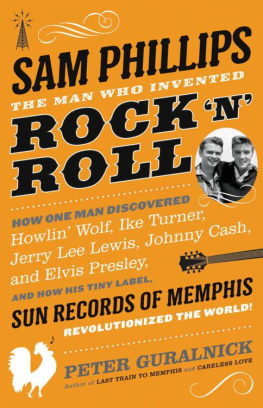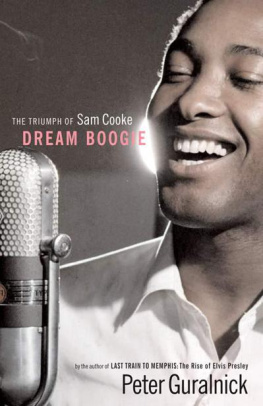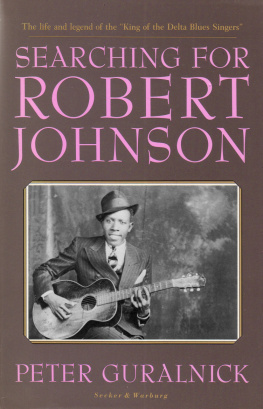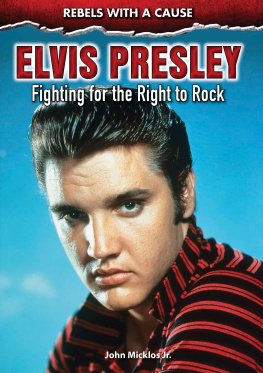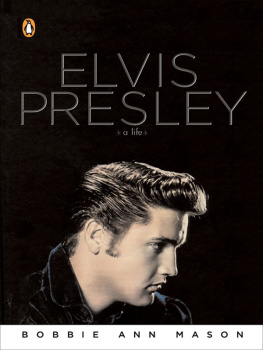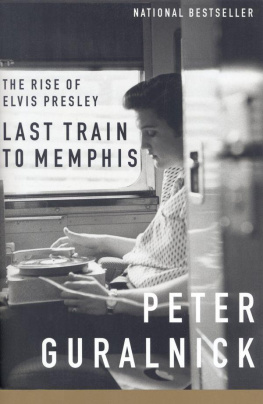
Sam and Becky with Knox and Jerry, May 1949. Courtesy of the Sam Phillips Family
In which SAM PHILLIPS addresses the AUTHOR: excerpted from a real-life PLAY IN ONE SCENE
Its a great story, and it will go down in history. I dont know how great the book will bebut its a great story. Peter, look, let me just tell you like I told all of my children, like I told every artist that walked in the door. Dont be afraid of it. No matter what I say to you, dont be afraid of it. But be frightened to death of not giving your best judgment to everything. Dont let history down. Fuck Sam Phillips. Fuck anything that goes. Its an important erayou got so much more responsibility to that than you got to any one person, including my ass.
The AUTHOR acknowledges that this is so. The AUTHOR suggests that if he doesnt come in for criticism, in Sams terms he will have fucked up.
If you dont, youre just another one of the motherfuckers that are using this thing to the detriment of the beautiful changes it wrought. Thats not right. If you let that happen, you aint a very conscientious, dedicated, devoted person. It aint for you to put me in a good light. Just put me in the focus that Im supposed to be in. Man, I dont give a damn if you say one good thing about me. Your charge is to put all of it in focus and ferret out the bullshit. Theres been enough of that. Im going to tell you, Peter, Ferret it out, for Gods sake. Look, and tell your damn publisher, Hey, if it takes me forever to write it, its going to be the most authentic thing that has ever emanated from this era. With all the contradictions to the contrary. You read me?
AUTHOR: I do. (And he does.)
From this, he took a lesson: value the original, fragile, and rough. Thats the art. HOLLAND COTTER on the art of Henri Matisse
To us, their less tried successors, they appear magnified pushing out into the unknown in obedience to an inward voice, to an impulse beating in the blood, to a dream of the future. They were wonderful; and it must be owned they were ready for the wonderful. JOSEPH CONRAD , Lord Jim
IT WAS A HEAVY CHARGE , as I think should be evident from the dramatic reconstruction on the opposite pagebut one from which I never felt I could shrink.
I met Sam Phillips in a flood (see chapter 9), and as I wrote at the time, from that first meeting his words had all the weight of vatic truth. He seemed like an Old Testament prophet to me, in both looks and manner. Or, as singer-songwriter John Prine said, in describing his own first meeting with Sam: his eyes would grow wide, like fire and brimstone. It looked like his eyebrows and his eyes themselves were on firethey were just wildyoud swear that his hair would kind of get curly, and his hands moved like a preachers.
I mean, it was something!
But that wasnt itnot really. At least not all of it. I suppose I should confess at the start what I am sure will become immediately apparent to the reader: this is a book written out of admiration and love. Nor will it be any less evident that this book is different from the two other biographies I have written, on Elvis Presley and Sam Cooke. Not that there was any less admiration or love in those books. But I knew Sam Phillips, I knew him for almost twenty-five years, I was with him through good times and bad, and while I might not necessarily have chosen to have my responsibilities read to me by my subject, they are the same responsibilities felt by any other biographer (ferret out the truth, dont be afraid of it, and, in the end, Fuck anything that goes)they are the self-imposed responsibilities taken on by every writer, of fiction or nonfiction, for better or worse.
In that spirit perhaps I should also add that Sam would have disclaimed the subtitle of this bookwell, to be perfectly honest, he would have both claimed and disclaimed it, as he frequently did, more often than not in the same elongated sentence. I didnt set out to revolutionize the world, he said one time. Instead, what he wanted to do was to test the proposition that there was something very profound in the lives of ordinary people, black and white, irrespective of social acceptance. I knew the physical separation of the racesbut I knew the integration of their souls. That was what he set out to capture when he first opened his studio in January of 1950, when Negro artists in the South who wanted to make a record, he declared early on, just had no place to go. It went against all practical considerations, it went against all well-intended advice. He considered himself not a crusader (I dont like crusaders as such) but an explorer. To Sam, Rock and roll was no accident. Absolutely not an accident at all. You can say, he told me, he had the light coming on, and it spotted the possum. Right there.
Well, I guess thats one way of putting it. Lets just say Sam was the man who discovered rock n roll. But more to the point, he considered it his mission in life to open up an area of freedom within the artist himselfwhether that artist was Elvis Presley or Howlin Wolf or B.B. King or Johnny Cashto recognize that individuals unique quality and then to find the key to unlock it. That is what he sought to do with every artist who entered his studio, whether or not they ever achieved worldly success, whether or not they were ever likely to achieve it.
It might have seemed sometimes to an outsider as if the musicians were just fumbling around, and the producer (a term that did not even exist then, and that Sam to some extent would always disdain: I think he might have preferred to be called a practicing psychologist) was just letting things go to rack and ruin. But he wasnt. He was simply trying to pare things down to their most expressive essence. Michelangelo said: In every block of marble I see a statue as plain as though it stood before me, shaped and perfect in attitude and action. I have only to hew away the rough walls that imprison the lovely apparition to reveal it to the other eyes as mine see it. That was what Sam Phillips saw not in marble but in untried, untested, unspoken-for people: an eloquence and a gift that sometimes they did not even know they possessed. Like other celebrated American artistslike Walt Whitman, who sought to encompass the full range of the American experience in his poetry; like William Faulkner, who could see past prejudice to individual distinctions; like Mark Twain, who celebrated the freedom of the river and a refusal to be civilizedSam was driven by a creative vision that left him with no alternative but to persist in his determination to give voice to those who had no voice. With the belief that I had in this music, in these people, he said, I would have been the biggest damn coward on Gods green earth if I had not.

